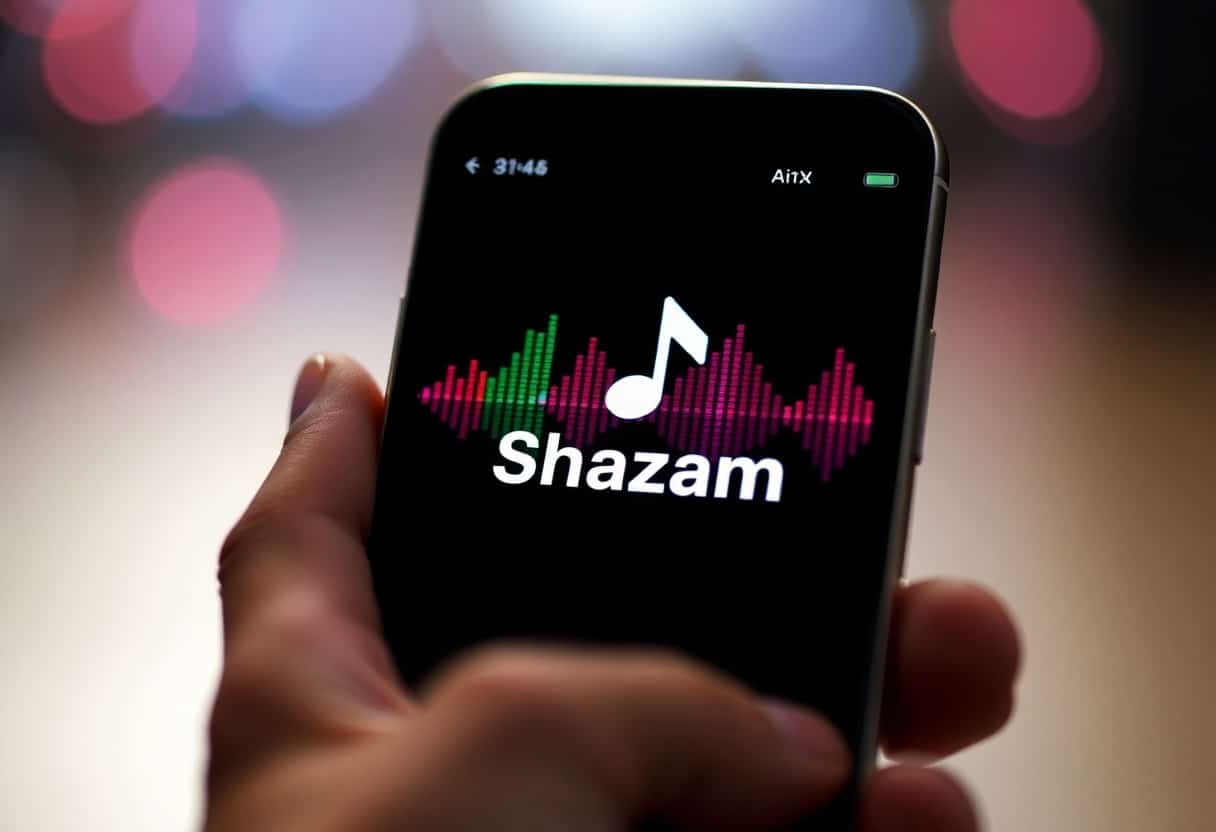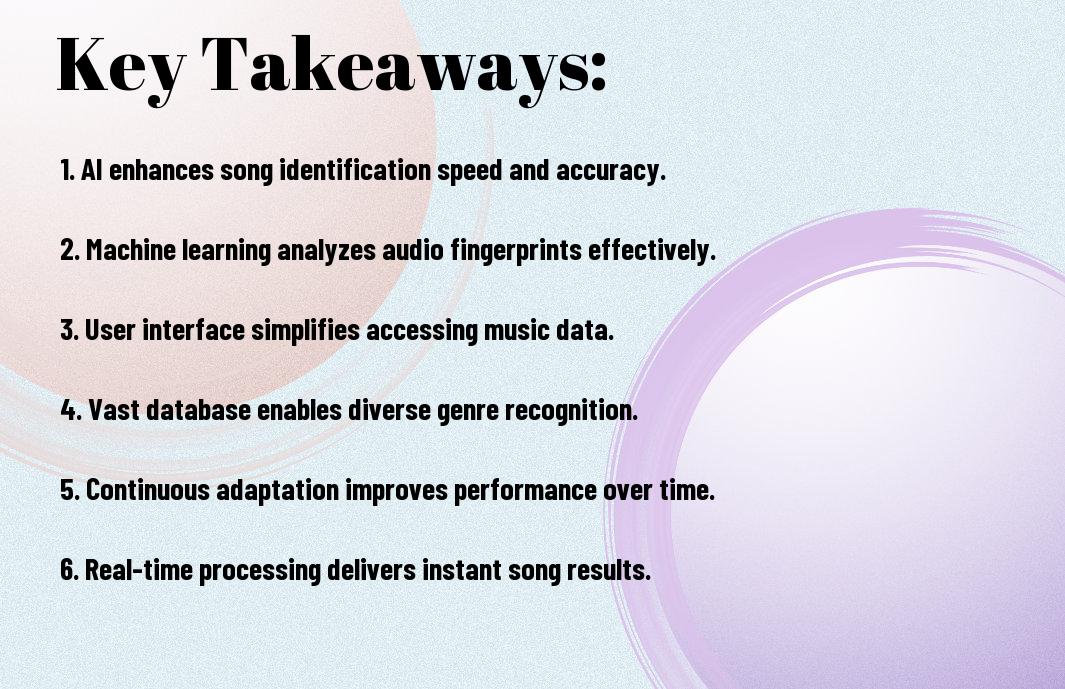Many of you might be familiar with how Shazam identifies songs in mere seconds. I want to investigate into the fascinating role of artificial intelligence in this process. By leveraging sophisticated algorithms and machine learning models, Shazam analyzes audio fingerprints to match tunes from its extensive database. You’ll discover how this technology not only enhances user experience but also revolutionizes the music industry. Join me as we explore the intricate workings of AI in Shazam’s song recognition, and unveil the science behind finding your favorite tracks in an instant.
Overview of Shazam
To understand how Shazam has transformed the way we recognize music, it’s vital to explore its innovative use of artificial intelligence. This app has become immensely popular due to its ability to identify songs within seconds, connecting users with music they hear in their environment. By harnessing AI, Shazam analyzes audio fingerprints, making it a powerful tool for music discovery.
History of Shazam
To appreciate Shazam’s impact on music recognition, one must look back at its origins. Launched in 2002, Shazam started as a simple phone service allowing users to text a code to identify songs. Over the years, it evolved into a smartphone app and incorporated advanced AI algorithms that revolutionized music discovery. Today, Shazam has millions of users worldwide, making it a leading name in song identification.
Core Functionality
Any music recognition app claims to identify songs quickly, but Shazam’s core functionality sets it apart. The app captures short audio samples, creating an audio fingerprint that it compares against an extensive database of songs, returning results almost instantaneously. This functionality allows you to connect to your favorite tracks or explore new ones efficiently.
Considering Shazam’s core functionality helps highlight its efficiency and user-centered design. The app utilizes a sophisticated combination of algorithms to match audio patterns, ensuring that it can identify songs even in challenging environments. Whether you’re in a crowded concert or a quiet café, Shazam delivers impressive accuracy and speed, allowing you to enjoy seamless music discovery. Its integration with music streaming services also enhances your experience, making it easy to listen to full tracks immediately after identification.
The Role of AI in Song Recognition
It is fascinating to see how AI has transformed song recognition technology. By leveraging advanced algorithms and machine learning techniques, platforms like Shazam can identify songs almost instantaneously. The integration of AI enables users to quickly find and access music, enhancing their listening experience while showcasing the power of modern technology.
Machine Learning Algorithms
Below the surface of Shazam’s impressive capabilities lie sophisticated machine learning algorithms. These algorithms analyze audio fingerprints—unique representations of sound—allowing the app to differentiate between songs effectively. By continuously learning from vast datasets, these systems improve over time, enabling more accurate and efficient song recognition.
Data Processing and Analysis
Analysis of audio data is a fundamental aspect of effective song recognition. Through advanced processing techniques, the app extracts crucial features from audio signals, focusing on tempo, pitch, and timbre. This detailed analysis allows Shazam to create a comprehensive profile of a track, which it can then match against its extensive database.
Considering the vast amount of music available today, data processing and analysis play an crucial role in achieving quick and accurate song recognition. Shazam employs sophisticated techniques, including frequency analysis and pattern recognition, to create precise audio fingerprints. This process not only aids in identifying songs quickly but also enhances the app’s ability to deal with various audio qualities, ensuring a seamless user experience even in challenging environments.
Audio Fingerprinting Technology
Once again, we explore into Shazam’s advanced technology, specifically focusing on audio fingerprinting. This remarkable technique allows the app to identify songs through a unique digital summary or “fingerprint.” By understanding these fingerprints, Shazam can quickly match incoming audio samples with their extensive database. For a more in-depth discussion, check out Music Recognition Algorithms: How Does Shazam Work?.
How Audio Fingerprinting Works
Among the key elements of audio fingerprinting is the extraction of distinctive features from the audio signal. This process involves analyzing sound waves and converting them into a mathematical representation, which is then stored in a database. When you submit audio to Shazam, it compares the incoming fingerprint against its library to find matches, allowing near-instant recognition of the song.
Advantages of Audio Fingerprinting
Beside providing rapid song identification, audio fingerprinting offers various benefits that enhance user experience. This technology efficiently processes audio in real-time with minimal resource consumption, allowing users to discover music almost instantaneously.
Understanding the advantages of audio fingerprinting reveals its impact on the music experience today. The efficiency it offers is not only about speed; it also ensures accuracy. Users can identify songs in crowded environments where traditional methods might falter. Furthermore, audio fingerprinting can operate under various conditions, such as distorted sound or background noise, making it a robust tool for music recognition. This technology has truly transformed the way we connect with music.
Enhancements through AI
All of Shazam’s advancements are driven by the integration of artificial intelligence, allowing the app to improve its song recognition capabilities significantly. Through machine learning algorithms, the app is able to analyze audio samples more deeply, leading to faster identification of tracks and a more user-friendly experience.
Improvement in Accuracy
Behind the scenes, AI technology fine-tunes Shazam’s recognition process, allowing the app to better distinguish between similar tracks. This improvement enhances its ability to identify songs played in noisy environments, ensuring that your music discovery is accurate even in challenging conditions.
Speed and Efficiency Gains
On top of its accuracy, Shazam has also made remarkable strides in speed and efficiency, thanks to AI-driven algorithms that process audio data instantly. This means that the time between hearing a song and identifying it has been reduced dramatically, making your experience seamless.
Considering the rise of mobile technology and the increasing demand for instant access to music information, Shazam’s AI capabilities allow the app to identify songs in mere seconds. This speed is achieved through advanced signal processing techniques that quickly analyze and match audio fingerprints against a vast database, allowing users like you to connect with your favorite tracks without delay. In a fast-paced world, these enhancements make discovering music not just quick, but also enjoyable.
User Experience and Interaction
Keep in mind that the user experience plays a vital role in how effectively AI is integrated into Shazam’s song recognition. It’s not just about identifying songs; it’s about creating an engaging, seamless journey for users as they explore and connect with music. The intuitive nature of the app ensures that users can focus on enjoying their music discovery without any technical distractions.
Interface Design
Before submerging into the advanced AI capabilities, let’s consider the interface design of Shazam. Its clean and straightforward layout allows users to interact effortlessly with the app. The vibrant colors and engaging icons attract attention without overwhelming the senses, enhancing overall usability.
User Engagement Strategies
At the core of Shazam’s success is its strategic approach to user engagement. By offering personalized recommendations based on your musical tastes and listening habits, the app creates a custom experience that keeps you coming back for more.
Interaction with users extends beyond mere identification of songs; it’s about fostering a deeper relationship with music. Shazam encourages users to share the songs they discover on social media, building a community around musical exploration. Additionally, features like song previews and curated playlists make the experience more interactive, keeping you actively involved in your music journey. This level of engagement not only increases user satisfaction but also deepens your connection to the music you love.
Future Trends in AI and Music Recognition
Not only has AI revolutionized song recognition today, but it also promises an exciting future. As technologies advance, I see a future where AI will provide richer, more personalized music experiences by learning our preferences and suggesting tracks that align with our moods and activities. This evolution will enhance how we interact with music and possibly introduce new forms of creativity in music production and curation.
Evolving Technologies
Below, I can see a shift toward machine learning and neural networks enabling more sophisticated recognition capabilities. As AI algorithms improve, I believe they will offer faster processing times and more accurate identification of songs, even in challenging environments. This will greatly enhance user experiences across various platforms and devices.
Potential Applications
Recognition of songs will extend beyond casual listening. I envision AI seamlessly integrating with other technologies, such as smart home devices, social media platforms, and live events, to create a more immersive and interactive musical landscape.
In fact, as the demand for personalized music experiences grows, potential applications are expanding rapidly. I can easily imagine AI being utilized in fitness apps to curate playlists that sync with users’ workouts, or even in social networking platforms where songs automatically tag users’ memories and shared moments. This integration could transform how you discover and share music, ultimately enriching your daily life with tailored soundtracks to accompany every occasion.
Summing up
Summing up, I see AI as the backbone of Shazam’s song recognition, allowing you to identify music in real-time effortlessly. The advanced algorithms and machine learning techniques create a seamless experience, enabling you to discover songs with impressive accuracy. As I explore how AI shapes our interactions with music, I recognize the transformative impact it has on both listeners and the music industry, paving the way for an even more connected auditory experience in the future.



